14 Best and Worst Tokyo Places to Visit: Is Tokyo Worth Visiting?

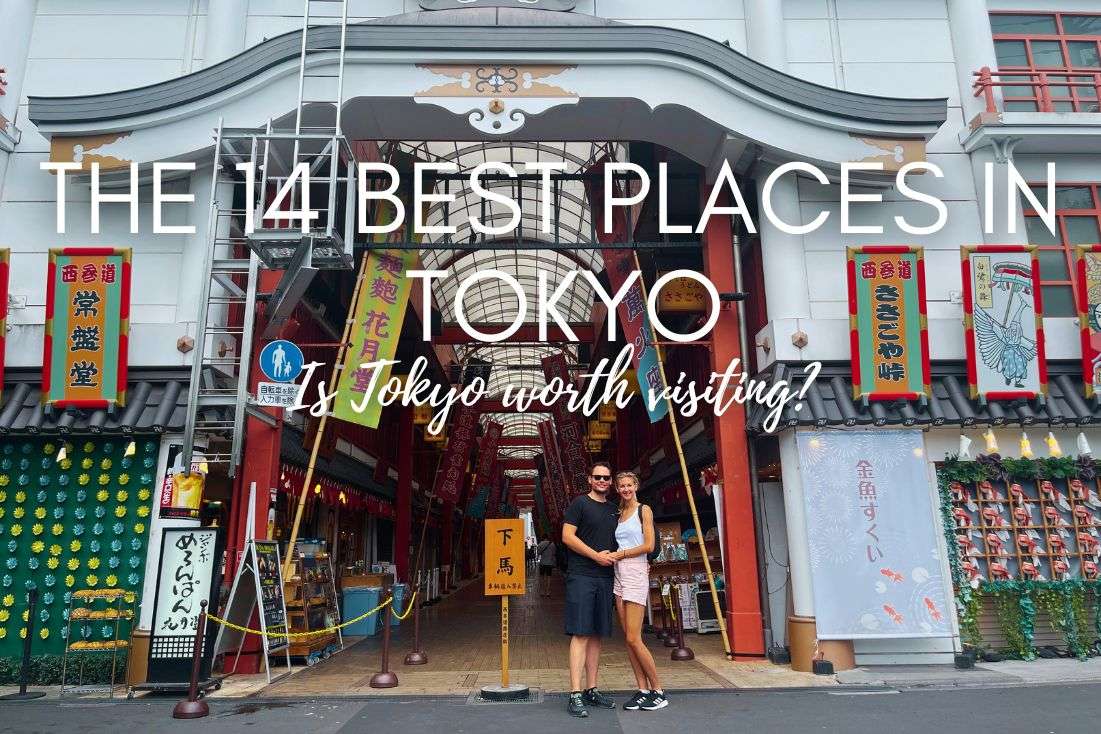
What NOT to see in Tokyo (because it’s boring)
Best places to see in Tokyo (though some just barely made the list)
1. Ghibli Museum aka Studio Ghibli
2. Karaoke in Tokyo—the best activity in the city!
6. Akihabara district: Gadgets, anime, maid cafes, and pachinko
9. Day trip from Tokyo to Nikko
10. Day trip from Tokyo to Kamakura
Tokyo strikes me as a peculiar beast. Touted as the world's largest city, with travel guides devoting endless pages to its glory, I find it bafflingly underwhelming. Like… there’s nothing to do in Tokyo unless you fall into a quirky niche, like “obsessed with crowds” or “want-maids-to-wait-on-me weird”.
Unlike the serene politeness of Kyoto, Tokyo's hustle feels brash, its streets a far cry from the considerate Japan you’ll find just about everywhere else. Post-1945, it's a city reborn, yet, aside from the manga madness and pachinko games, it lacks the soul-stirring sights Japan is known for. If I were to journey through Japan again, Tokyo might not even make my list of places to see! It's the LA of Japan—overhyped, yet somehow a must-visit for the uninitiated.
Is Tokyo overrated? Yes! One of the top things to see in Tokyo is Godzilla on a rooftop, for Pete’s sake! But we all know you’re still going anyway out of fear of dying of FOMO. If Tokyo does call your name, I say indulge in its true highlight: karaoke, an unexpected joy (and the place I found my hidden talent), and then choose from my list of Tokyo sights based on your personal taste.
Godzilla tip: If you’re one of the people that’s more excited about Godzilla than I want to know about, book yourself into the Gracery Hotel Shinjuku. You can not only get a room with a Godzilla view, but he’ll also be waiting for you in the lobby. You’re welcome.
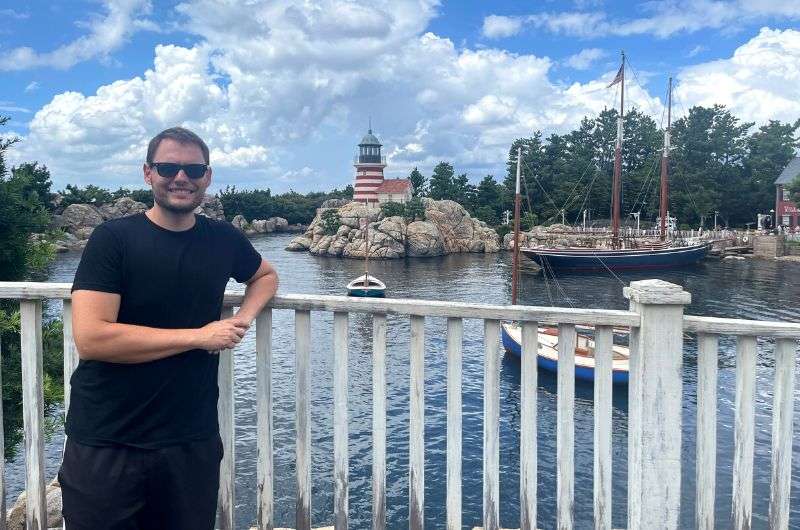
I’m going to show you around! @DisneySea
In this article, I’ll describe 11 places to see in Tokyo and 3 to skip (yawn), including my personal experience with them so you can gage how you’d like them. I’ll add 3 day trips from Tokyo because, well, you’ll probably need them to fill your time “in” Tokyo.
Tip: Ready to ignore my advice on skipping Tokyo, stop with all this daydreaming and see it for yourself? I’ve put together a 3-day Tokyo itinerary for you so you can go get bored IRL! The last of the 3 days is spent either on a day trip outside of Tokyo or at DisneySea... Because Tokyo is overrated!
Now let’s get crackin’ with this Tokyo guide!
Below, you’ll find my handpicked guide to the best things and must-see attractions in Tokyo—from iconic landmarks and vibrant districts to unique local experiences. Use this list to explore Tokyo beyond the obvious and discover what makes the city both fascinating and unforgettable.
What NOT to see in Tokyo (because it’s boring)
Right off the bat, don’t waste your time trying to figure out if you need to see these 3 places in Tokyo. I won’t even waste my (and your) time writing about them. Instead, I’ll just share my notes:
- Ginza, the skyscraper district: Yep, lots of skyscrapers.
- Takeshita Street, the pop culture mecca: At least they have the garbage cans (read my Japan travel tips if you have no idea why there are no garbage cans anywhere in Japan).
- Roppongi, the entertainment district: Nothing, just some nice restaurants and clubs. A single small extra point for views of Tokyo Tower.
Best places to see in Tokyo (though some just barely made the list)
On the other hand, definitely take the time to see these places in Tokyo:
- Ghibli Museum
- Karaoke in Tokyo
- Tokyo Skytree
- DisneySea
- Senso-ji
- Akihabara district: Gadgets, anime, maid cafes, and pachinko
- Imperial Palace
- Shibuya Crossing
- Day trip from Tokyo to Nikko
- Day trip from Tokyo to Kamakura
- Day trip from Tokyo to Hakone and Mt. Fuji
As you can see, Tokyo is mainly worth visiting for its proximity to other, much better day trips from Tokyo.
Now let me go deeper into all those places in Tokyo and tell you how I felt.
1. Ghibli Museum aka Studio Ghibli
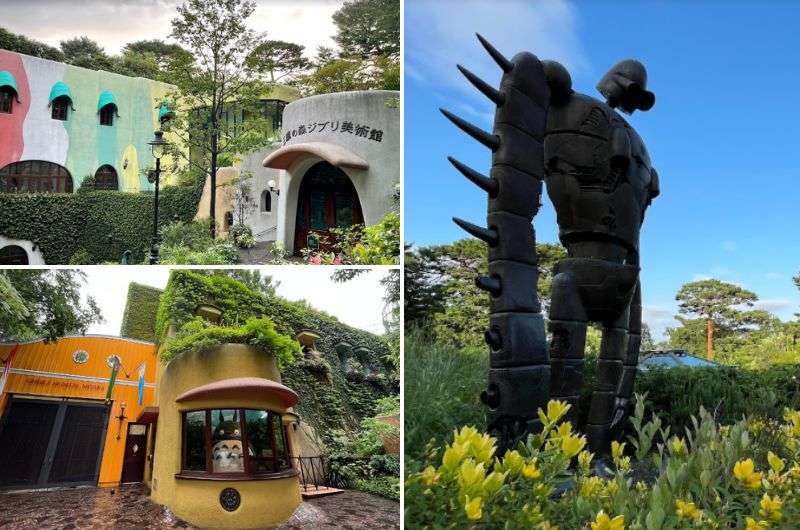
Ghibli Museum gives the perfect anime vibes. Notice Totoro at the counter on the bottom left
The highlight of my Tokyo trip was the Ghibli Museum, and I’m not an anime fan or anything. The Ghibli Museum is a must for die-hard anime fans and the curious alike, a dive into the enchanting world of Studio Ghibli. It's like stepping into a Miyazaki film—whimsical, unexpected, and utterly captivating.
Imagine every nook and cranny, from the stained-glass windows to the cute ticket, snipped from a real piece of Ghibli film history. I had to laugh at the human-sized Totoro inside the ticket counter. I can’t lie, he looks a little creepy standing there with a straight face while everyone else is smiling ear to ear.
Pro Tip: Fans of 'My Neighbor Totoro' will find special exhibits and references to the beloved character throughout the museum, making it a true treat for anyone who loves Totoro.
You’ll notice that the building and museum grounds themselves are colorful and cutesy, so you’ll be in an anime mood the moment you approach from the outside. Once inside, it's a feast for the senses, with exhibits that bring to life the studio's iconic films.
The museum itself might not be sprawling, but the 3 floors and rooftop (with Laputa waiting for you up there) are packed with Ghibli awesomeness, and it’s interesting to see how Ghibli films are made.
Sure, there might not be English translations, but who needs words when you're being spoken to in the universal language of wonder? Don’t miss the chance to see the museum-exclusive short film!
No photos are allowed inside.
There’s a better-than-expected café on site as well. You’ll need about 1.5 hours for your Ghibli Museum visit.
How to buy tickets to the Ghibli Museum
A heads up about tickets: getting one requires planning, as they are quick to sell out and impossible to buy on the spot. I made this mistake during my first visit to Tokyo.
Tickets are sold online for a specific date and time and are released for sale on the 10th of each month for the following month. You’ll need to stand by with your credit card and fast clicking action if you want to have a good choice of time slots.
You can buy up to 6 tickets at once, and you’ll need to present your ticket reservation email once you arrive at the Ghibli Museum. Say hi to Totoro for me!
Getting to the Ghibli Museum: train or car?
The Ghibli Museum is in Mitaka, which is to the west of Tokyo city center, easily accessible by train or car.
Train: To get to JR Mitaka Station, take the JR Chuo Line, which takes 20 minutes from JR Shinjuku Station. It's a 15-minute walk to the museum from the station’s south exit. I survived my train ride just because Tokyo has one of the most efficient and convenient train and metro networks in the world. It was not exactly a treat, but it served its purpose.
Car: If you’re driving from the centrally located Nohga Hotel Akihabara for example (which is where we stayed and can recommend it), it’s 22 km (14 miles) and depending on the time of day you go it may take up to an hour to get to the museum (there’s a parking lot available by the museum).
- Ghibli Museum official website
- Open daily 10 am–6 pm
- Tickets cost JPY 1000 for adults
2. Karaoke in Tokyo—the best activity in the city!
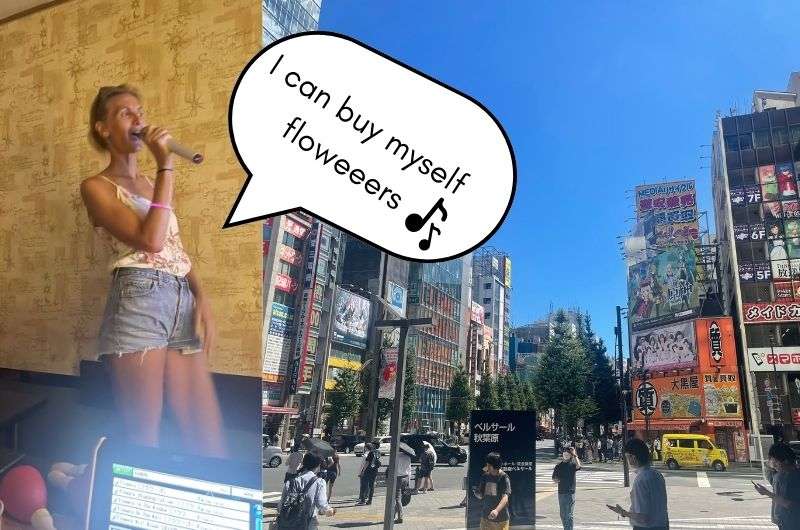
My girlfriend enjoyed Tokyo karaoke to the fullest. Especially when I was singing
If you don’t sing karaoke in Tokyo, you haven’t been to Japan. It’s a completely crazy experience—imagine a 7-floor building where each floor is lined with one tiny karaoke room next to another, and it is PACKED with people belting all the top hits you can think of. Hilariously, everyone is singing way worse than they think they are.
How do Tokyo Karaoke Bars work?
It’s simple: you go to the reception, ask for a karaoke booth based on the number of people, usually by the half-hour or hour, and pay per person, and you’ll be given a booth number to go to. Prices depend on the time you visit (weekends and evenings are more expensive), but let's say you should expect JPY 1000 per person per hour.
It is standard (and sometimes mandatory) to order drinks and food, too. Those are paid separately when you are checking out. Some places even have costumes that you can borrow if you want to dress the part, or maybe for a confidence boost, or maybe to act out some weird fantasy, who knows. I was awesome even in my regular clothes, so...
Once you’re in your booth, it’s pretty easy to find your way around the tablet with song choices if you remember to switch it to English before you start, and you’ll be singing “Flowers” in no time!
Needless to say, we had a blast; it was my top favorite activity in Tokyo, hands down. And I found out I can rap! Like, I’m good, dude! Rock songs… not so much.
There are so many karaoke houses to try in Tokyo, each with a different style and theme, so you’ll have no trouble finding a spot when the urge to grab a mic hits. Some of the most popular karaoke chains are: KaraokeKan, Big Echo, Shidax, and Uta Hiroba.
3. Tokyo Skytree
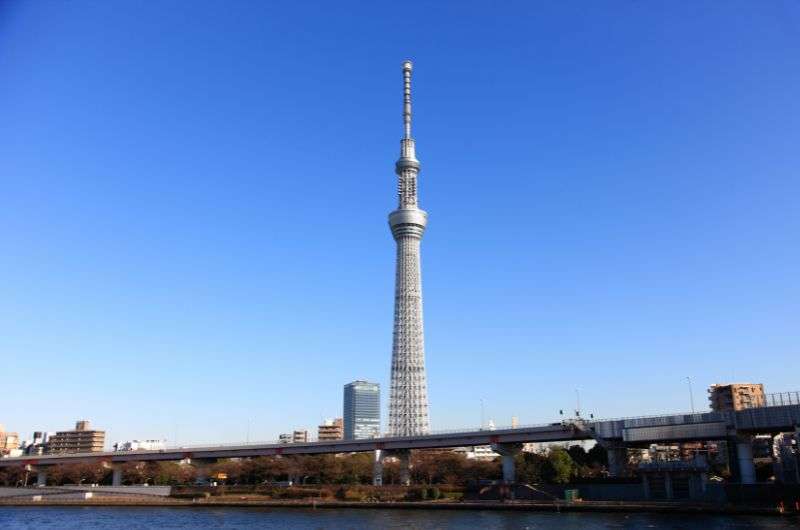
Tokyo Skytree—the tallest tower in the world
Towering over Tokyo, the Skytree isn't just tall; it's the tallest in the world! The tallest tower, that is, and one of the tallest structures, at 634 m (2,080 ft). This is the type of experience I’d expect from Tokyo—something better and cooler than anywhere else in the world, something that makes you go “Wow!” (too bad it’s the only place that actually lived up to the hype in Tokyo).
The Tokyo Skytree will redefine your idea of 'panoramic.' It’s official, a respectable job is being a broadcasting tower. But, just like Clark Kent, he has something a little more fun up his sleeve, too—two eye-popping observation decks, complete with spiral staircases and a glass floor that’ll leave some people white-knuckling the walls! I had no such urge… on the outside, but was looking for my nearest exit and a parachute on the inside, haha.
I got to the first viewing platform and was blown away. Now this is the Tokyo I’m talking about! You can see all the way until the Earth curves! Or so it seems. Then you reach the top viewing area, and you are smacked in the face with even better views! Try to make out Mt. Fuji in the distance, it’s a surreal experience. But that glass floor, damn!
There’s a restaurant and a café that you can enjoy as well, but we gave them a miss. Of course, there are souvenirs on sale, and you can even send a postcard home from the Skytree itself.
At night, the Skytree alternates between three illumination colors (blue, purple, and reddish-orange), as well as some special lighting thrown in here and there to keep it spicy.
If you’re taking the train, head to Tokyo Skytree Station or nearby Oshiage Station.
Getting tickets for Tokyo Skytree
Ticket lines can be as long as the tower is tall, but you’re a smart traveler who reads the best travel blog (this one), so you’ll buy them in advance on the official website (up to 30 days in advance). If you’re not sure what’s going on and can’t plan to save your life, you can still save your image by buying same-day tickets online (for a little more money). Everything is better than just rocking up and hoping to catch a break.
Is Tokyo Skytree worth it?
Absolutely, Tokyo Skytree is worth a visit because the views from it are truly spectacular! You know, especially if you're all about those cityscapes that stretch into tomorrow (and all the way to Mt. Fuji if you have good visibility!). And it’s simply an impressive structure.
- Tokyo Skytree official website
- Open daily 10 am–9 pm, last admission 8 pm
- Tickets cost JPY 2700 for both decks if bought in advance, JPY 3100 for same-day tickets
Alternative observation options in Tokyo
- Similarly, Tokyo Tower, painted bright orange and white to comply with international aviation safety, is another iconic structure that stands out in Tokyo's skyline.
- Other notable observation points in Tokyo's cityscape include Mori Tower in Roppongi Hills, an iconic landmark offering panoramic views and a unique cultural experience, contrasting with the Skytree's modern design and height.
4. DisneySea
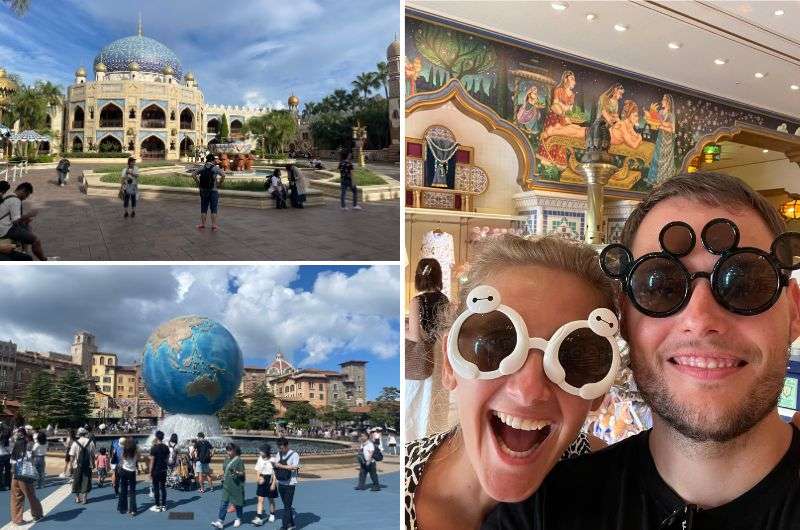
This was actually great fun
I highly recommend spending one of your Tokyo days at DisneySea, the only one of its kind globally. This place has a slightly more grown-up vibe than Disneyland Tokyo (like a tad, nothing major, there are still children everywhere and rides for little kids too), making it a no-brainer for those of us roaming without a kid in tow. All of the reviews I’ve read say DisneySea is the best out of all the Disneylands worldwide, so if you’re on the fence, don’t be.
DisneySea can be done in a day—I, for one, don’t need extra days at any theme park (but we also had a blast at Universal Studios in Osaka!), but you may decide differently. If you are following in my footsteps and opting for a single day, get there early.
For a cool 60 bucks (USD), you get in, but then you’ll want those priority passes once you see the queues—or, if you're as neurotic as I am, splurge on a timed entry and breeze past the masses.
I loved how DisneySea has an actual harbor with a steamboat; you can see they had the budget to make it truly a place “where imagination and adventure set sail” (the official tagline). At USD 4 billion, DisneySea is the most expensive theme park ever built.
As something that seems almost like an oversight, despite the sea in its name, there's ironically just one water ride at DisneySea.
My favorite parts of DisneySea were the Arabian Coast (I loved Aladdin as a kid!) and Tower of Terror, as it is the biggest drop I experienced in any theme park.
Other DisneySea highlights, like the Journey to the Center of the Earth ride, with its dark tunnels and monster exhibits, make you forget you're in a theme park and not on some sci-fi adventure. Very much appreciated by the childless visitor!
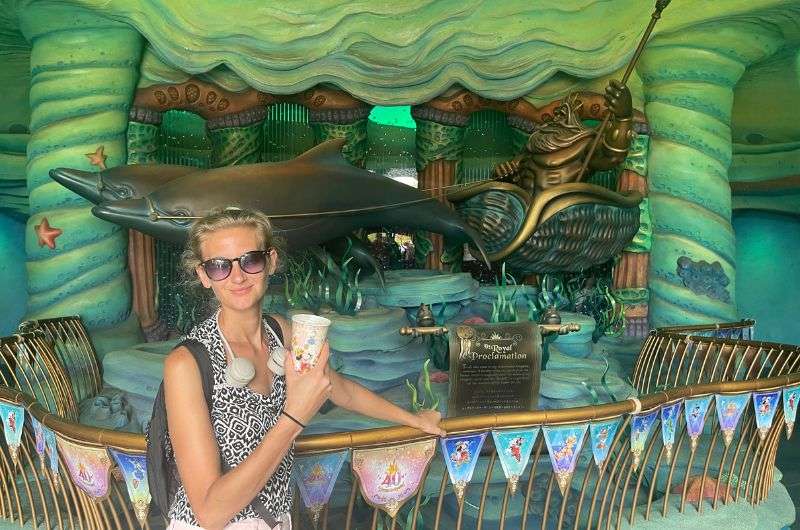
My girlfriend and Neptun
Some places, like Fortress Exploration, had me wondering what Disney movie they’re supposed to be from. And don’t get me started on the Venetian Village. I mean, what's up with that? It's like wandering into a Renaissance fair by accident.
DisneySea is like Disney, but not. It's a day well spent. The verdict? DisneySea might just top the charts as the best theme park on the planet.
And if you’re afraid you’re missing out on the real Disney magic, don’t be. Disney has a knack for turning employees into perpetually waving, smiling robots, and the sets are as magical as they can be, so you still get the whole experience just like you would in Disneyland.
DisneySea vs Disneyland Tokyo: What’s the difference?
DisneySea is like Disneyland’s older cousin—a little more mature, and a little more obsessed with water.
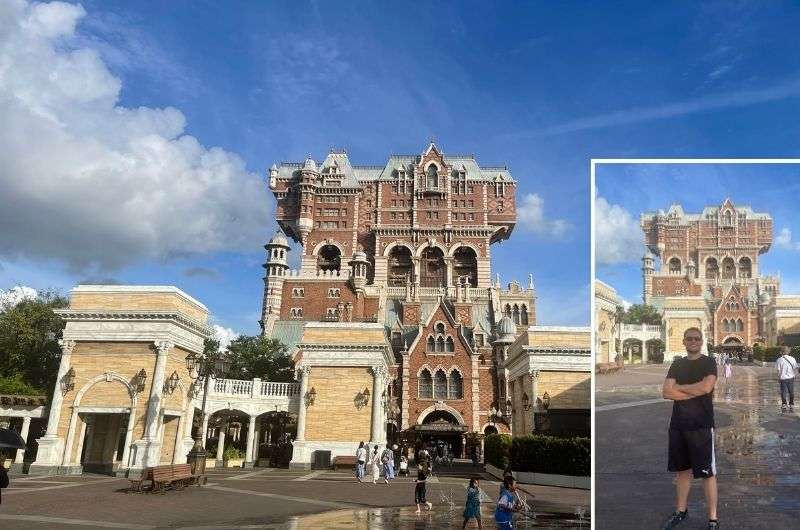
Cool building, right? The Tower of Terror!
DisneySea is the only one of its kind in the world, and it's where Disney ditches the tiaras for a touch of sophistication. Aimed slightly more at adults (or at least, the young at heart), it's an exploration of themed ports and nautical adventures. Think less Cinderella, more Nemo. The vibe here is mature; the rides are a bit more thrilling; and the scenery is absolutely stunning. It's Disney with a dash of grown-up magic, plus a few beers thrown in for good measure (or was that just me?).
Disneyland Tokyo, on the other hand, is the classic Disney experience. It's where fairy tales come to life, with castles, princesses, and all the Mickey Mouse you can handle. It's family-friendly to the core, designed to enchant visitors of all ages with its blend of nostalgic rides and timeless characters. Disneyland is where you go to live out those childhood dreams, complete with parades and meet-and-greets with your favorite characters.
5. Senso-ji Temple

Time for some shopping and fortune telling @ Senso-ji
Ah, Senso-ji, the oldest spot in Tokyo for those seeking some spiritual street cred; it honors Kannon, the goddess of mercy (you can see 1000 statues of the 11-headed, 1000-armed goddess at Sanjusangendo in Kyoto). It's like the granddaddy of temples, standing since 645, though it was mostly rebuilt in the 1960s because history in Japan is basically a series of "build, burn, repeat."
Senso-ji is a large and colorful Buddhist temple, very popular, with lots of people always out and about. When you enter through the main gate, you’ll find a longish shopping street with traditional Japanese souvenirs being sold. Hey, maybe you really do need that 3rd folding fan! It’s a historical street with many small stores, though the iPhone covers and toys don’t really match the theme.
Along the street and further inside, you can get your fortune told through omikuji (fortune-telling paper slips). For a non-believer such as myself, it’s just a silly little joke, fine for JPY 100. For the superstitious, such as my girlfriend, it’s a nail-biting 3 seconds trying to choose the right stick.
Don't miss the chance to cleanse yourself with smoke and water before entering—it's like a spiritual detox. I think the smoke is supposed to make you smarter, and then the water purifies you.
The pagoda at Senso-ji is said to contain Buddha’s shoes. They say if you can fill them, you're the chosen one. Just kidding. But it's good to know why this place is so special. Bet you didn’t think it was because of footwear!
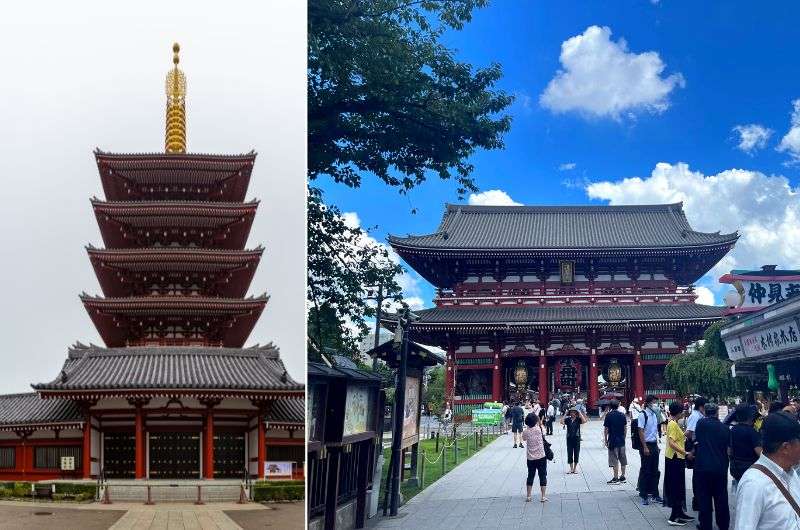
Buddha’s shoes are enshrined in the pagoda
Tip: I’ve explained the difference between a Buddhist temple and a Shinto shrine in another article, along with the appropriate etiquette at either. You don’t want to get your claps and bows all wrong!
You can get to Senso-ji from Asakusa Station. From Tokyo Station, it’s about a 15-minute ride with 1 transfer at Kanda Station.
- Senso-ji grounds are always open. The main temple is open daily from 6 am–5 pm. The shops open around 9 and stay open until late.
- Free entry
6. Akihabara district: Gadgets, anime, maid cafes, and pachinko
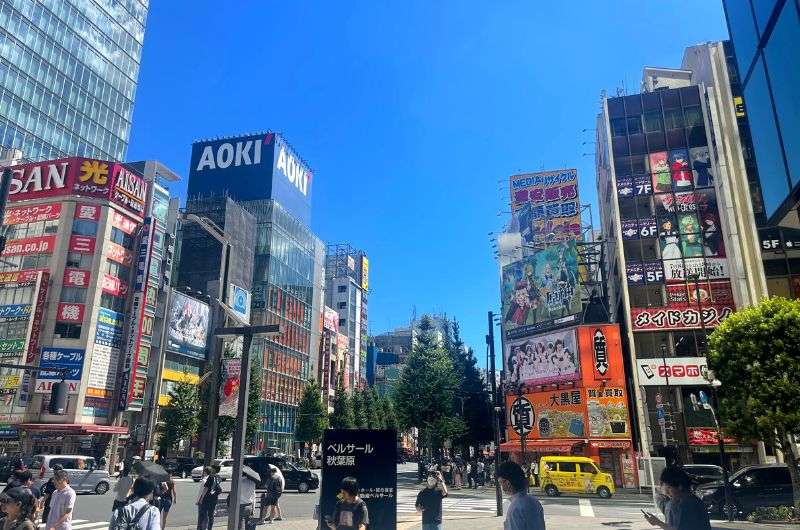
Akihabara during the day...
Welcome to Tokyo’s geek heaven, or as I like to call it, the "Why yes, I do need a third LED-backlit keyboard" district. It’s quintessential Tokyo, where neon lights and billboards rule the architecture. And if you leave without seeing a grown man in a Pikachu outfit, did you even go to Akihabara?
The Akihabara district is a sensory overload. It's where your wallet goes to die a glorious death among the latest (sometimes it felt like old school) tech gadgets and rare collectibles, and where you go to marvel at how, in a city with a population like Tokyo, you really can find a target audience for absolutely everything.
In summary, you could say that Akihabara is where you can experience some very specific Japanese activities. For me, I’m definitely “been there, done that, don’t want the t-shirt” on this one.
Maid Cafes in Akihabara
Let’s talk about maid cafes. “The what cafes?” Oh, they're exactly what they sound like—bizarre and utterly Japanese, and, if I can make a subjective assessment, pretty uncool. The people who visit these establishments are just strange (as you’d imagine).
Maid cafes are cafes where waitresses are dressed like maids. They greet customers using an annoying voice and tend to them in an overly friendly, servant-like manner, even drawing cute pictures onto their food or breaking out into song and dance.
Basically, they act like I’d never want anyone around me in real life to act. To add to the nonsense, these ladies were some of the least attractive I’d seen in Japan, and it took ages to get our order. They may be squeaky and awkwardly complacent, but they sure are slow!
And then there are the pachinko houses. In short, it’s a local hangout for gambling addicts. But gambling is prohibited in Japan, right?! Right. But this pinball machine turned into a “secret” gambling game, and it’s the loudest thing you’ll ever experience. It feels very out of place in an otherwise outwardly reserved Japan.

...and Akihabara at night
The name pachinko comes from the sound the metal balls make in the machine, “pachi pachi” (you have to repeat that super-fast and loud to get the idea). When you add the music, sounds, and flashing lights of each pachinko machine, you get a headache really fast.
How does pachinko gambling work?
As I mentioned, gambling is prohibited, but since you’re playing for metal balls, Pachinko is just fine. Once you’ve won (or lost) enough games, you gather your balls, and then the magic loophole happens: To get your cash winnings, you have to leave the pachinko house, balls in hand, and go to a separate building where they give you money for said balls.
Hence, it isn’t actual gambling… you’re just selling your metal balls. Of course, everyone knows about it, but I guess the lawmakers are pachinko players, too.
Tokyo hotel tip: Given that I loved Akihabara so much, you may be surprised that this was where our hotel was located. Yep, we slept in the midst of all the neon + pachinko + maid madness! But the hotel was great, I have to admit.
The Nohga Akihabara is not cheap, but it's got the best eats around. You're trading space for vibe here with cozy 21m2 rooms. Its secret weapon? Killer blackout curtains keep out the glare of the sun, moon, and neon billboards. Downside? No heated toilet seat—felt like a step back into the Ice Age! Our butts were used to a little more special treatment by this part of our Japan itinerary.
7. Imperial Palace
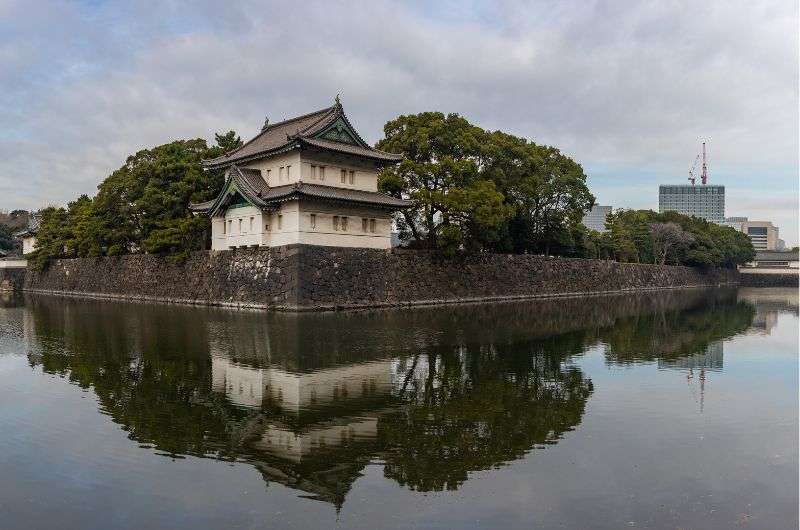
This is where the emperors live
The Imperial Palace is where you can't actually go inside any of the buildings, let alone see the emperor, but can wander around his massive garden! I guess it’s interesting because you know they’re in there, somewhere.
If you take the guided tour, you can spend 75 minutes walking onto a tiny portion of the otherwise forbidden Inner Grounds. I’m not really sure what you do on that short walk for so long because I didn’t care to find out, but it’s an option. Tours are free and run twice a day.
The palace occupies the site of the original Edo-jō, the Tokugawa shogunate’s castle and seat of power during the Edo period, adding a layer of historical significance to its serene surroundings. During the Meiji era, under Emperor Meiji, Tokyo was transformed from Edo into Japan's capital and became a center of modernization.
Tip: In case you really, really want to see the imperial family, you have a chance! Twice a year, on January 2nd and then again on February 23rd, which is the emperor’s birthday, the guided tour takes a slightly different route, and the emperor and his family come out onto the balcony of the palace and wave to the public.
The Imperial Palace sits in the heart of Tokyo, a green oasis with important-looking buildings surrounded by a moat—because nothing says "keep out" like a body of water. It’s nothing spectacular, but it’s a must-see in Tokyo.
You can walk around the Outer Gardens and get all the way up to Nijubashi Bridge, which connects the Outer and Inner Gardens. Only guided tours are allowed over the bridge.
You can walk to the Imperial Palace’s Kikyo-mon Gate from Tokyo Station in about 10 minutes.
- Official website of the Imperial Household Agency
- The grounds are always open and free to enter
- Guided tours go at 10 am and 1:30 pm every day except for Mondays and Sundays. Tickets are free but limited in number. They can be reserved on the Imperial Household Agency’s website, or you can try to get a walk-in ticket at Kikyo-mon Gate.
8. Shibuya Crossing
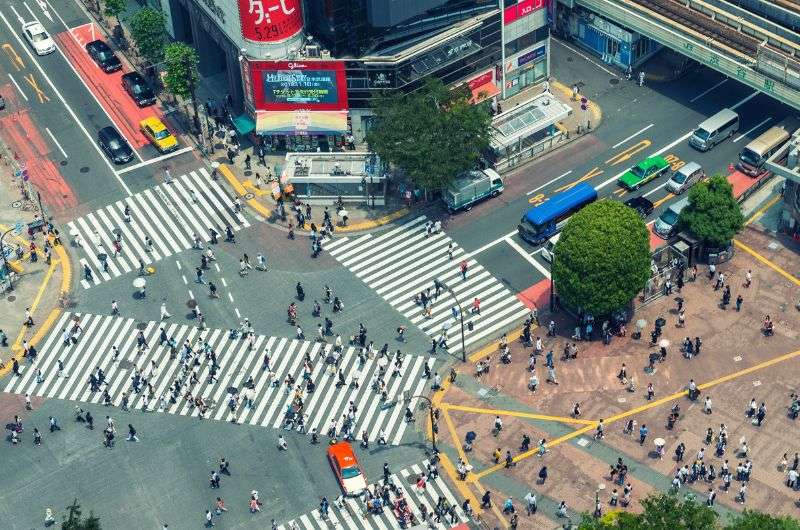
Shibuya Crossing is interesting, perhaps only because tourists make it interesting. Otherwise, it's just a busy pedestrian crossing
It's just a colossal crosswalk, folks! Sure, it's a spectacle of human flow, but once you've seen it, well, you've seen it. You can really start to tell the pickings are slim in Tokyo when one of must-sees is also very overrated. Shibuya Crossing is… a busy crosswalk! WOW! I know you want to see it and walk it for yourself, so did I, and so did a thousand other tourists. Now that I think of it, I wonder if it’s the tourists making it this busy…
Shibuya Crossing is pure chaos because the crosswalks don’t just connect 4(ish) regular street corners, but there’s also the massive diagonal path down the middle. With this addition, the crossing possibilities are almost endless! You could spend hours doing figure eights at Shibuya Crossing if you wanted. Maybe when you find out how overrated Tokyo is and you run out of things to do, lol. Add people stopping in the middle, taking pictures and capturing videos, and you’ve got yourself an overcrowded nightmare. Or an epic experience, you choose.
Where is the best view of the Shibuya Crossing?
If you’re hoping to get a shot of Shibuya Crossing from higher ground, you can try several options:
- There’s a Starbucks at the intersection with big windows, which is an ok option, but it’s still pretty low to the ground.
- At Shibuya Station, follow the signs towards Shibuya Mark City. You can catch a view from the passage way, though it’s not the best view.
- A paid option is at the observation deck of the Magnet 109 building. Take the elevator to Mag’s Park, the rooftop event area. The views from up here are awesome! For JPY 1500, you get Shibuya Crossing views and a drink.
- The L’Occitane Café building has several cafes that have window seats. Guess what you can see from those windows?
To get to Shibuya Crossing, take exit no. 8 (Hachiko Square) from Shibuya Station.
BONUS: Speaking of which, I’d like to add an honorable mention for Hachiko, whose statue you can see at Hachiko Square. Hachiko, the legendary loyal pooch of Tokyo, is the city's unofficial mascot of fidelity. This dog took "man's best friend" to a whole new level, waiting for his owner every day at Shibuya Station, even years after his owner couldn't come back (because he was dead—in case that wasn’t clear).
Loyal dog shout out to Greyfriars Bobby! This good boy has a similar story and a statue of his own in Edinburgh, Scotland. Read Bobby’s story (and my attempt at poking holes in the story).
These last three places are day trips from Tokyo. Because sooner or later, you’ll realize you want to escape the concrete jungle full of weird people (or just too many people in general) that is Tokyo. Here are my top picks:
9. Day trip from Tokyo to Nikko
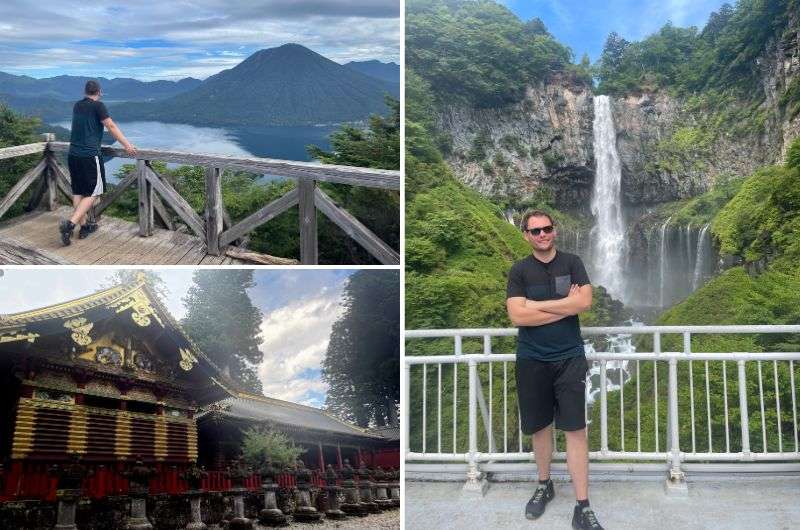
Oh Nikko, how I love thee
Nikko, our first stop on our Japan trip, ended up being my favorite place in Japan. Forget the food, though—total letdown. And while a bad restaurant experience has been known to completely shatter my opinion of a place (looking at you, Ronda!), Nikko’s charm level managed to hold up.
I think Nikko is worth 2 days of your time, but if a day trip from Tokyo is all you have managed, do it. The place is a postcard come to life, with gems like Lake Chuzenji, Kegon Falls, and the majestic Toshogu Shrine. Just brace yourself for the traffic; it's a nightmare. But even that didn’t make me love Nikko any less. Every honk and delay is worth it for the views and the serenity of spots like Yudaki Falls and the Imperial Villa.
Nikko is a 2-hour drive or train trip from Tokyo city center.
Nikko hotel tip: The Marriott in Nikko is fantastic. I’m not usually a chain hotel type of guy, but the Marriott’s fantastic location, extremely comfy beds, and uber-smart toilets had me impressed. The coffee… not so much. Bleh.
Get more info: If you’re intrigued, hop over to my full guide to Nikko’s top sights.
10. Day trip from Tokyo to Kamakura
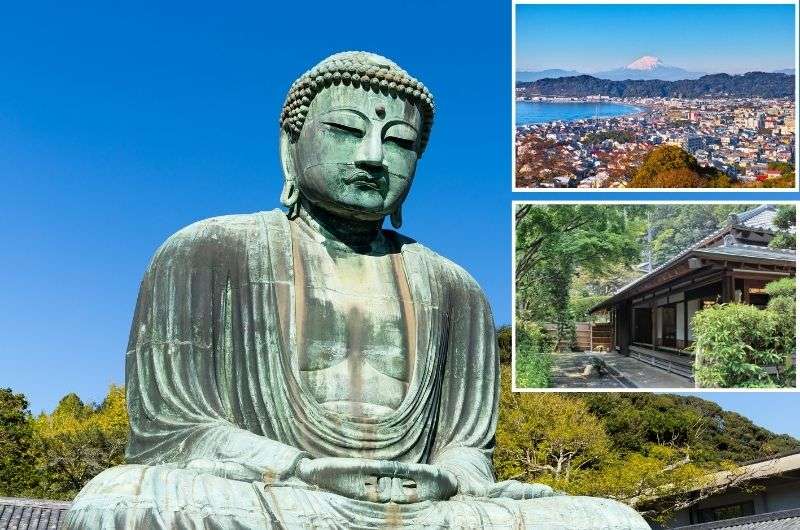
The Great Buddha statue in Kamakura survived even a tsunami
Kamakura, with its chill vibe and historical depth, feels like stepping back in time. It's a coastal town where dozens of ancient temples meet the beach.
The Great Buddha is the headliner, but the real show is the town's laid-back atmosphere, contrasting sharply with Tokyo's frenzy—you’ll need a breather after a few days in Tokyo, trust me.
You can visit shrines like Hasedera, all set against a backdrop of lush greenery and beaches. The vibe here is a mix of spiritual tranquility and seaside relaxation. I steer clear of hippie towns, but Kamakura manages to stay more in surfer dude territory (a decidedly more Japanese kind) and less in obnoxious tie-dye and crystals land.
It's a place where you can explore the Kotoku-in Temple, get lost in the bamboo groves of Hokokuji (and compare them to those of the more famous Arashiyama Bamboo Forest), or just hang out by the beach.
A day trip to Kamakura is a must for anyone wanting to swap city hustle for some zen and sea breeze.
Kamakura is 1.5 hours away from central Tokyo by train or car.
11. Day trip from Tokyo to Hakone and Mt. Fuji
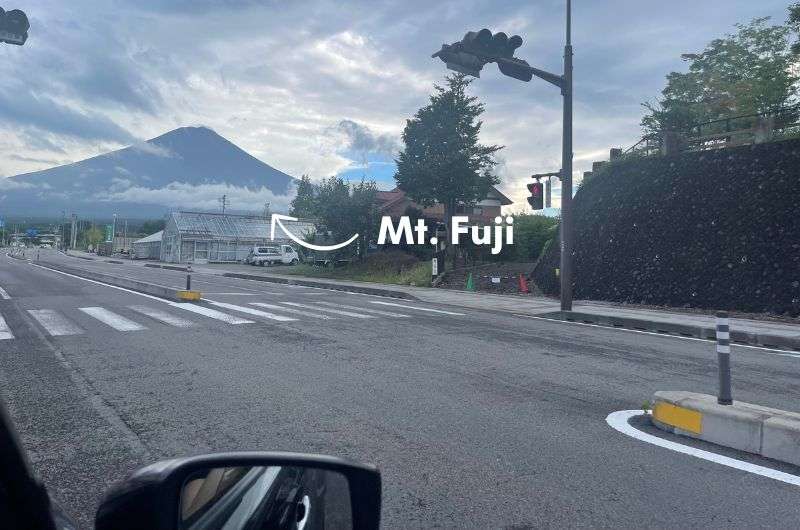
Mt. Fuji, we’re coming for you!
I’m adding Mt. Fuji as a day trip from Tokyo despite there being enough things to see and do in the Hakone area to fill a lovely 2–3 days. But if you must squeeze it into 12 or so hours, leave early and make the most of it.
Mt. Fuji is Japan’s tallest peak (and active volcano), respectfully called Fuji-san by the locals. The nearby town of Hakone is a haven of natural beauty and surprisingly good restaurants, and the perfect place to base yourself if I convince you to spend the night(s).
While some Insta-famous spots like Hakone-jinja, the shrine on Ashinoko lake, might not live up to the hype, the real treasures like the Owakudani valley, the vistas of the super volcano, and hikes make it unforgettable.
For a little 1-hour long hike and the best views of Mt. Fuji (if the clouds are playing ball), take the purple trail at Mt. Mitsutoge.
Check out the pirate boats on Lake Ashi, and don't miss the Chureito Pagoda viewpoint. It's that iconic red pagoda with Fuji in the backdrop—you know, the one that screams "Japan" in every photo. It’s not as amazing as Instagram wants it to look, but it’s nice.
For a touch of adventure, the Owakudani Valley, with its steaming vents and volcanic landscapes, offers a stark contrast to the serene beauty of Fuji. It's a reminder that this tranquil giant is very much alive (and smelly!).
Getting to Mt. Fuji from Tokyo is a breeze. The drive to Hakone takes 1.5 hours from central Tokyo. If you’re going by train, you’ll need to make at least one transfer, and it’ll take you at least 2 hours. Drive, I tell ya!
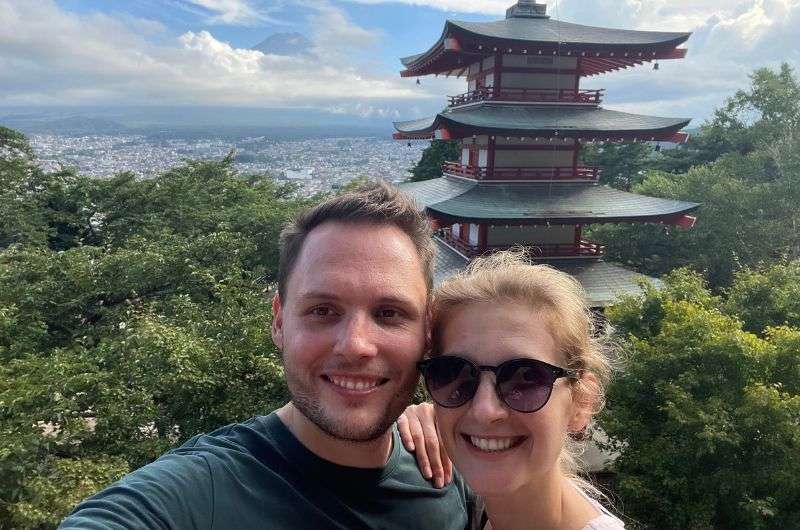
So, where will you go next? Hakone was great. Just saying... (notice Mt. Fuji’s tip in the background)
For everything Mt. Fuji, including tips on the best viewpoints, hikes, tourist attractions that are and aren’t worth it, and one of the top restaurants I encountered in Japan, check out my Hakone + Mt. Fuji guide (or go straight for the itinerary).
If you’d like to see how to fit all of the above (and some extras) into 3 days, hop on over to my 3-day Tokyo itinerary. If you’d like to see other places in Japan that have way more to offer, check out my guide to Kyoto or Nikko.
Conclusion: Is Tokyo Worth Seeing?
So, after all the neon lights, skyscrapers, towers, and really weird things you can try in Tokyo. I would say still not really. Japan is so interesting, and there is much to see that spending excessive time in Tokyo is just that..excessive. I am being a bit harsh here, but if you compare it to Kyoto, it's just meh.
But if you really have to, I would set aside 2 days and see Ghibli Studio, Tokyo SkyTree, and DisneySea, and then off you go to amazing day trips from Tokyo as Kamakura, Nikko, and Hakone. I also like public transport in Tokyo and Izakayas.
Honestly, in every recall I have of Tokyo, it's more happy than not, but it just does not justify its place in the limited number of days you can spend in Japan.
This post contains affiliate links. I earn a small commission if you make bookings through my links, at no additional cost to you. Thank you for your support!
What NOT to see in Tokyo (because it’s boring)
Best places to see in Tokyo (though some just barely made the list)
1. Ghibli Museum aka Studio Ghibli
2. Karaoke in Tokyo—the best activity in the city!
6. Akihabara district: Gadgets, anime, maid cafes, and pachinko
9. Day trip from Tokyo to Nikko
10. Day trip from Tokyo to Kamakura


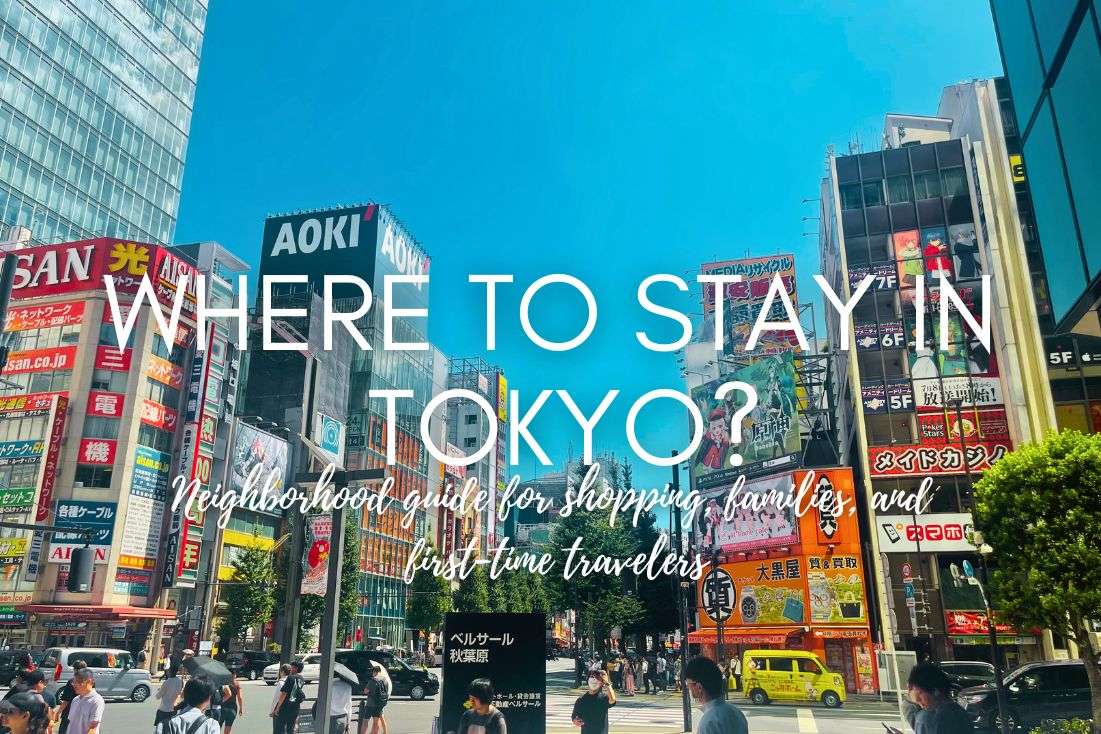
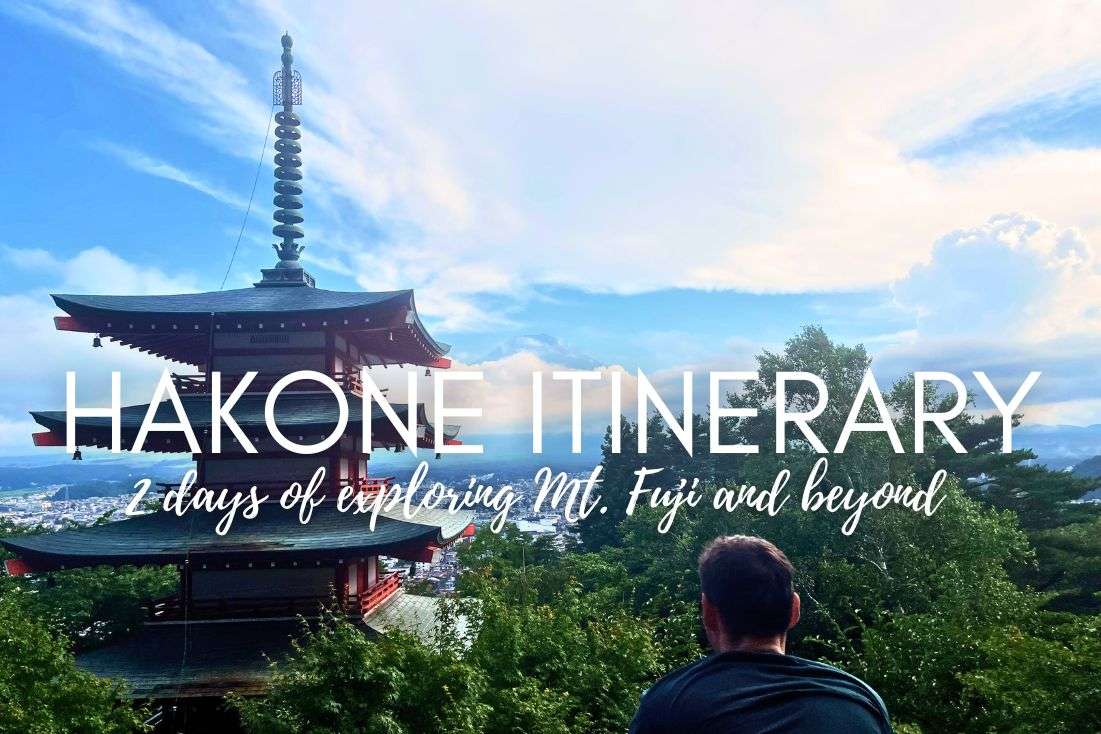
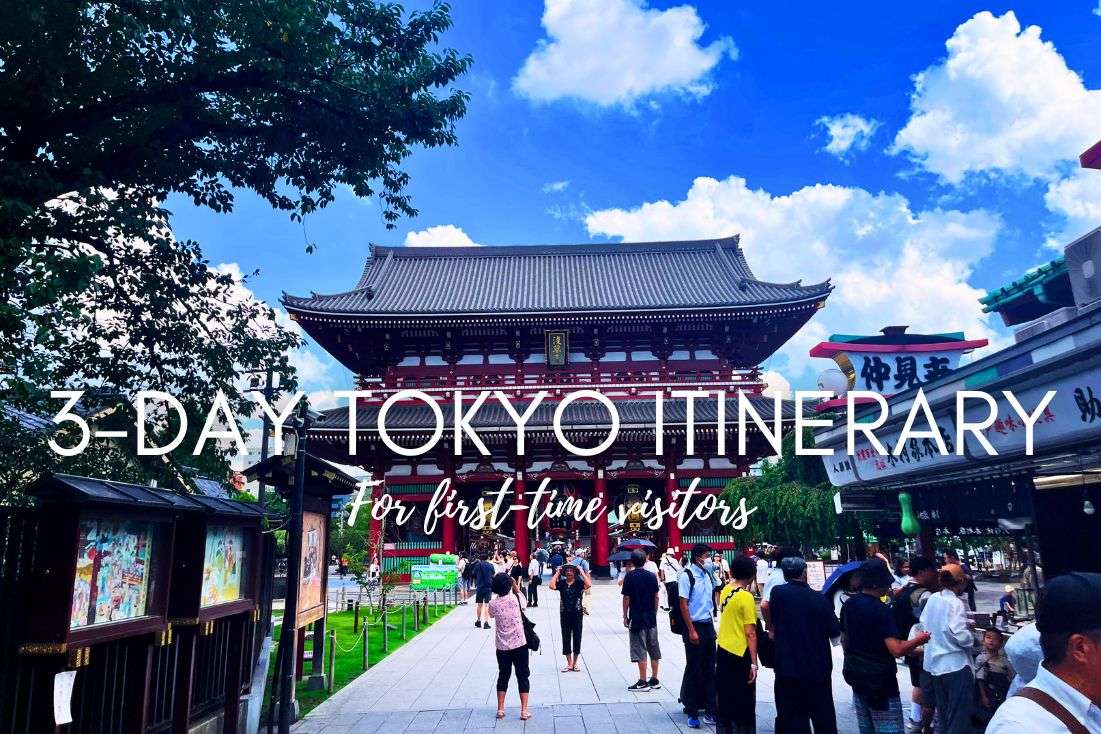





Comments | Thoughts? Give us a shout!